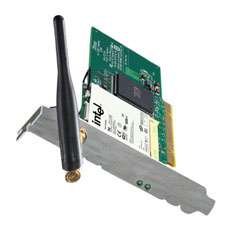WWiSE Consortium Submits Joint Proposal to the IEEE 802.11 Task Group N

A consortium of companies collaborating under the moniker "WWiSE" today announced their intended submission of a complete joint proposal to the IEEE 802.11 Task Group N (TGn), which is chartered with developing a next-generation Wi-Fi standard capable of sustaining data throughput in excess of 100Mbps. The technology foundation is based on MIMO-OFDM. IEEE 802.11n will be an especially important standard in the WLAN market as it will build upon and extend the capabilities for the vast number of users currently enjoying the benefits of Wi-Fi connectivity. Companies within the WWiSE consortium that contributed to the proposal are Airgo Networks, Bermai, Broadcom, Conexant Systems, Inc., STMicroelectronics and Texas Instruments.
"WWiSE" stands for worldwide spectrum efficiency, a key element for all proposals submitted to Task Group N. As such, the WWiSE proposal was developed with global deployment and backwards compatibility with all other Wi-Fi standards as its principal and mandatory requirements. Additional considerations included data-rate compliance with worldwide regulatory requirements in important regional markets such as Japan. The proposal also offers a royalty-free license option from the WWiSE companies. Such license options are designed to facilitate the worldwide deployment of 802.11n technology.
The WWiSE proposal builds on the existing and globally adopted 20MHz channel format of the tens of millions of Wi-Fi devices already in use. This approach ensures support for the existing worldwide installed base, while improving the performance of Wi-Fi networks within the designated RF spectrum. Further, the coalition companies represent an important cross-section of both the IC supply and consumption segments that comprise the Wi-Fi marketplace, promoting a strong relationship between developers and end-product manufacturers.
Highlights of the WWiSE Proposal
The technical aspects of the WWiSE proposal mark a significant improvement in the capability of 802.11 implementations. Key features include: Mandatory use of the approved, pre-existing, worldwide 20MHz Wi-Fi channel width, assuring immediate applicability and deployment in all regulatory jurisdictions.
Enhanced MIMO-OFDM technology is key to achieving a maximum data rate of 135 Mbps in the minimum mandatory 2x2 configuration and a single 20MHz channel to keep implementation costs low, while greatly improving upon simple antenna additions or channel bonding schemes.
Rates up to 540 Mbps, accomplished with a 4x4 MIMO structure and 40MHz channel width (where permissible by regulatory bodies), provide a roadmap for future devices and applications.
Mandatory modes affording backwards compatibility and interoperability with existing Wi-Fi devices in the 5 GHz and 2.4 GHz bands to ensure strong support of legacy deployments.
Advanced forward-error-correction coding option to facilitate maximum coverage and range, applicable in all MIMO configurations and channel bandwidths.
Intellectual Property (IP) Position of WWiSE Contributors
The contributing member companies of WWiSE have jointly agreed to specific IP licensing terms for their proposal. Under IEEE requirements, all proposal submissions to TGn must be made under acceptance of RAND licensing (Reasonable and Non-Discriminatory) terms to all parties. WWiSE contributing companies fully comply with this requirement. In addition, if the WWiSE proposal is selected as the 802.11n standard, these companies have further agreed that reciprocal RAND-Z licenses (RAND under Zero royalty) to their essential IP will be available to any party upon request.
Under this agreement, which is not a patent pool, but a reciprocal royalty-free individual license option, WWiSE member companies will not charge developers for an 802.11n license for their respective patent claims that are essential to implementing the standard. This will lower costs for developers, manufacturers and consumers. It is not necessary to be a contributor to the WWiSE proposal in order to take advantage of this license offer, which is expected to gain considerable support among the Wi-Fi product developer community.
About IEEE 802.11
The IEEE 802.11 specifications are wireless standards that specify an "over-the-air" interface between a wireless client and a base station or access point, as well as among wireless clients. Task groups within the 802.11 Working Group work on the specifications, seeking to develop the highest quality interoperable standards for wireless Internet. These specifications focus on improving service levels and resolving compatibility issues between manufacturers of wireless LAN equipment.
Further information about WWiSE, the WWiSE proposal to IEEE 802.11 TGn and the WWiSE IP statement may be found at www.wwise.org.

















